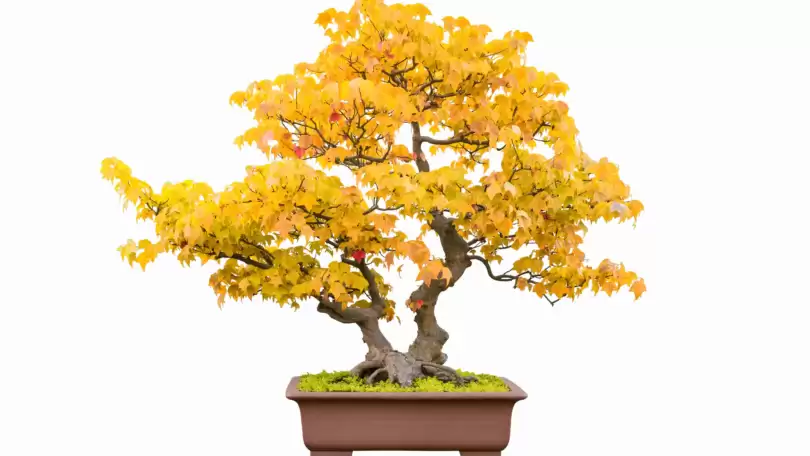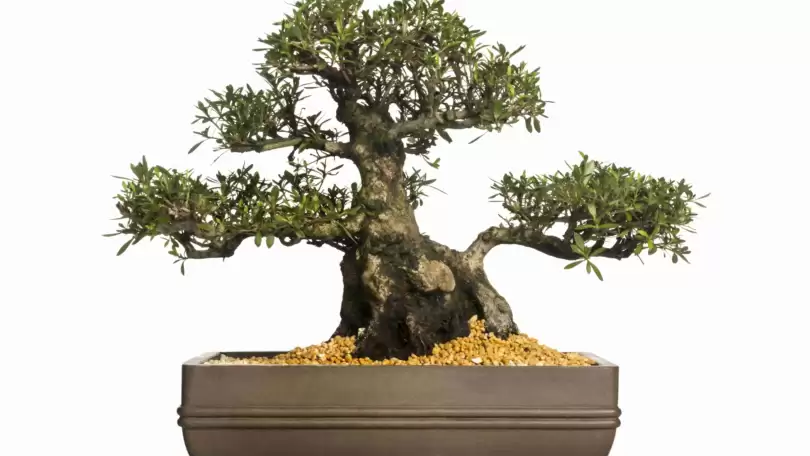How to Choosing a Bonsai Maple Tree?

Introduction
A bonsai maple tree is a fair-weather companion, but with the correct conditions, one tiny tree may provide months of splendor. Japanese maples thrive in zones 5 through 8, preferring a temperate climate devoid of strong freezes in the winter and scorching summer sun.
They thrive in my Vancouver, British Columbia yard. In fact, I have four Japanese maples in my modest urban yard. I know it’s probably one (or three) too many for such a little place, but I’m okay with my plant obsession. But let’s not include any other members of my family in this discussion!
Do bonsai Maple Tree Prefer to Be in The Sun Or In The Shade?
These trees thrive in either a sunny or dappled shade environment. They do require some sunlight to survive and provide that lovely red fall hue, so they should be kept somewhere with at least some sunlight.
Just remember that a Japanese maple in a container in the sun might quickly dry up. The leaves can rapidly get crispy if there isn’t enough water in the soil to keep them wet.
What is the Best Way to Prune a Japanese Maple Tree?
When you choose the correct tree, you won’t have to do any pruning. It will fill in the space you’ve supplied for it without the need to be trimmed down in size. It should also have a lovely natural and organic branching structure.
It is preferable to go into the Japanese maple and thin off branches rather than head-chopping the branches if the Japanese maple becomes too dense. The more you prune branches as close to the trunk as possible while maintaining the organic structure, the more you’ll be able to appreciate the genuine beauty of Japanese maple in your landscape.
Choosing a Bonsai Maple Tree
Hardiness Zones for Bonsai maple tree When and Where to Plant Your Japanese Maple Tree Planting Bonsai maple tree with Fertilizer Tips for Transplanting Bonsai maple tree Bonsai maple tree Repotting Bonsai Selection:
The Japanese Maple the Bonsai maple tree has a wide range of cultivars and cultivar combinations. Bonsai trees constructed from Bonsai maple tree can be found in over 300 varieties. When choosing a Bonsai maple tree, there are five main considerations to keep in mind.
The very first consideration First and foremost, you must take into account the local weather conditions. Choosing a Bonsai maple tree that is at least two cold zones harder than the zone where you reside is recommended.
More Info About Red Maple Tree
In addition, consider the size of your Bonsai maple tree before you buy it. They come in all different sizes and forms. There are certain bonsai that grow much larger than others. It is easier to maintain a specific size if you prune your Bonsai maple tree once or twice a year.
It’s preferable to choose a Bonsai maple tree that will eventually reach the size you’ve allotted for your bonsai tree if you don’t want to prune your bonsai tree.
The Third Aspect The location of your Bonsai maple tree must also be carefully considered. Is it going to spend most of its time in the sun or in the shade?
Most Bonsai maple tree prefer early sun and afternoon shade, especially in the morning. Bonsai maple tree should not be left out in the sun all day. The final factor
In addition to the bonsai’s location, the sun’s rays also play a role. Dissectum Direct sunlight and a strong breeze are too much for Japanese Maples to handle. Palmatum Japanese maples can resist strong winds and bright sunlight.
Factor No. 5
The color of your Japanese Maple tree’s leaves is the last thing to take into account. Green leaves, crimson leaves, and variegated are all popular choices among gardeners. In comparison to red or variegated Bonsai maple tree plants, those with green foliage can survive higher temperatures and increased exposure to direct sunshine.
Zones of Hardiness for Bonsai maple tree 2 When deciding on the best Japanese Maple tree for your region, it’s important to take the climate into account when making your selection. Generally speaking, Bonsai maple tree are better able to withstand cold weather than hot.
Due to average winter temperatures, very few Bonsai maple tree dies. Late freezes in the spring, after the Bonsai maple tree have leafed out, are the most common source of cold damage.
Keep at least the diameter of the canopy’s base covered in 3 to 4 inches of mulch around each Bonsai maple tree. The soil will remain cooler for a longer period of time in the early spring as a result. Roots should be kept cool at all times in order to delay the appearance of buds and leaves.
Tip #2:
Don’t fertilize your Bonsai maple tree with fast-release fertilizers in early spring. If you have chilly soil, you’ll want to use controlled-release fertilizer, because it will slowly release nutrients. These are easy to apply, and their formulation will ensure that your Bonsai maple tree receives the greatest possible nutrients throughout the year.
Tree of Heaven: Bonsai Japanese Maple
Pruning in the spring is a no-no. Your Bonsai maple tree benefit from any pruning or trimming. Pruning is best done while the weather is warm, but avoid doing so in the early spring when the trees are just starting to put on new growth.
Japanese maples should be pruned to-wards the end of the latest projected freeze date in your area. Pruning in the fall and winter might lead to twig dieback due to freezing conditions. Pruning or trimming in the spring is the best time to get rid of any dead stems or twigs, so wait until then.
“Can I put my Japanese Maple tree in an outside container?” is another typical query. Absolutely! The roots may be exposed to colder temperatures than they would if the plant were planted in the ground.
The roots of a bonsai plant are typically two zones less cold-hardy than the plant’s foliage. To put it another way, if you live in a zone 5 cli-mate, your bonsai tree’s roots are only capable of coping with temperatures of -10 to -20 degrees Fahrenheit.
Shouldn’t this be zone 3 if the roots are less resilient in a container? Buying a Japanese bonsai tree that is 2 zones colder than your region is a preferable option for those who plan to keep their Japanese Maple tree outside all year. Bonsai maple tree in containers are more successful in the southern states.
Bonsai Maple Tree Grow in What Zones?
Bonsai maple tree hardiness zones provide as an indicator of what is normal in your area. Temperature anomalies can put you in a warmer or cooler zone for the season. While it is feasible to grow Japanese Maples and other plants outside of your area’s hardiness zone, there is a significant amount of danger associated with this.
Zone 5 is the USDA cold hardiness rating for the majority of Bonsai maple tree, with a few exceptions categorized as zone 4. In addition to being heat-rated, several Japanese Maple tree cultivars may also be grown in zones 9 and up.
There are many distinct Bonsai maple tree varieties, and knowing how big the bonsai tree will develop is essential. Bonsai maple tree require a time of dormancy, which is why it is ideal to grow them outdoors, but they must be adequately protected from the winter elements.
YouTube Bonsai
A Bonsai maple tree should be planted in the right location in some ways, succeeding with your Japanese Maples is like to succeeding in the real estate market. You need to be imaginative because the location of your Japanese Maple will determine whether or not it will grow. Protect your bonsai from the sun’s harmful rays with the highest care and attention.
Sun scald, leaf scorch, and watering requirements are reduced in the evening and late afternoon when the sun is lower in the sky. To ensure that your bonsai gets the correct amount of sunlight while avoiding sunburn, place it in an area that gets a fair amount of early sun exposure but has enough shade to protect it from direct sunlight.
Stressed bonsai plants are more susceptible to illness and damage from insects and other pests. To keep your bonsai tree healthy and beautiful for many years to come, you’ll want to create the ideal environment for it.
A location with plenty of huge shade trees is ideal for growing Japanese Maples. Bonsai maple tree thrive in settings with filtered or dappled shade.
Listen to an Article




8 Comments
Josette
It’s actually a great and useful piece of info.
I’m satisfied that you shared this useful information with us.
Please stay us informed like this. Thank
you for sharing.
moz197900
Thanx
Charolette
I’ve read some excellent stuff here. Certainly value bookmarking
for revisiting. I surprise how a lot effort you set to make this kind of fantastic
informative site.
Maita Akira
Thanx:)
Roseanne
Great staff, very caring down to earth people. Even though I’m a miserable person I do care about these people too.
So I thank you all for what you did to me.
Maita Akira
No Problem